Michelin Star Chef Gary Foulkes
By Neelima Agrawal
It is inspiring to meet people who excel in what they do, and try to figure out what makes them so. A month ago, on 14 February 2020 to be precise, I got the opportunity to interact with the Michelin star Chef Gary Foulkes, who was in Delhi to cook up a special wine paired five-course dinner at SET’Z in DLF Emporio Mall, New Delhi. Gary is currently the Executive Chef at the Michelin restaurant Angler in South Place Hotel, London. It was Nikhil Agarwal, the celebrated sommelier and founder of ‘All Things Nice’, who had brought him to India for the specially curated culinary experiences.
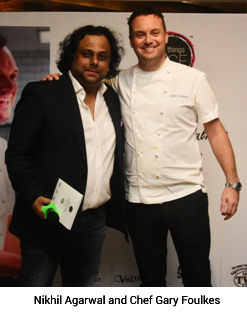
Meeting him a day ahead of the Big Day, Chef Gary shared many stories about working with some of the best chefs from early on, his extensive travels across various countries, his experiences with various cuisines, reason for his choice of profession, and most importantly, what is it that makes for a good meal. This last piece of information revealed the true essence of the finest dinner tables. In all humility, Gary attributed it all to Mother Nature. No gimmickry, not flown in from the other side of the globe, nor grown in special hot houses – just plain pure seasonal offerings, cooked with minimum fuss. His words were like a culinarian’s poem, painting a vision of spring. Additionally it is also an important message to all, to eat local and seasonal. I quote him here –
“Nature does the hard work, all you need to do is finish it off. I say it all the time – nature leads the menu. Nature tells you when the menu needs to change. In England, it is winter now, and soon it will be spring. And then, wild garlic pops up out of the ground, and the sea starts to warm up and the type of fish will change, mushrooms will spring up. The menu will change. So nature tells to change the menu,” said Chef Gary Foulkes. I could almost smell the fresh earth, the sea breeze, the fragrance of flowers, and the garlic frying in butter.
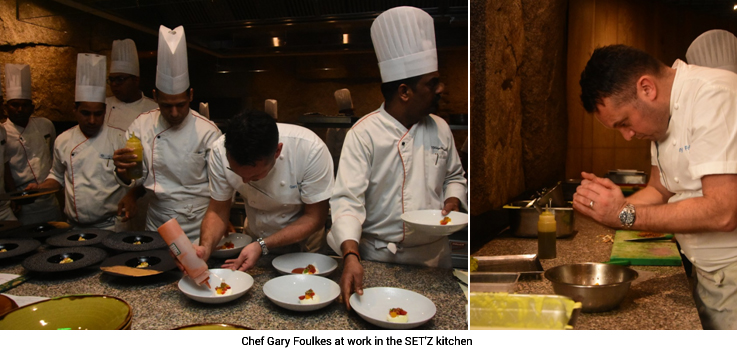
Here is the gist of the rest of our conversation.
You travel extensively. When did you last come to India?
I spent three years travelling. I had come to India about eight years ago, soon after I got married. My wife and I took a sabbatical from our work, decided we should do it before the children will arrive. It was amazing exploring the country, the traveling, the food, the people, there is so much to learn. We went all around, to Delhi, Rajasthan, Pushkar for the camel fair, Amritsar Golden Temple, Goa and Kerala. But it was not enough. There is so much to see in India. It is a big country and so diverse. Even the landscape is so diverse; you have beaches, mountains, forests, desert, and cities. It is fascinating, not just cooking, but the diversity, people, cultures. Asia has so many different religions. My wife is a lawyer by profession, but she is fond of good food.
How have your travels to different regions influenced your culinary output?
You see many things, wherever you go. There are a lot of ingredients that I have seen in Japan, or the ingredients that I have seen in Thailand. I could twist that to incorporate in how I cook. I love the spiciness in the Indian food, the gravies. I don’t know enough about it as a cook to even try. But, I use curry leaves as seasoning to give an extra level of flavor. I use a lot of lime. I am using coconut tomorrow.
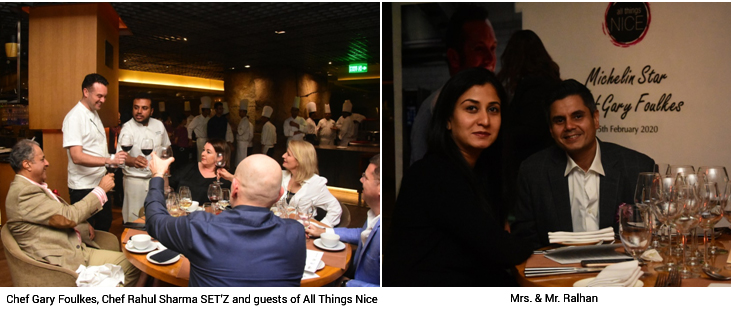
Any favorite cuisine or dish from any of India’s regions in North, South, East or West?
In the North, I really enjoyed the kababs and the way they cook in the tandoor, the dry meats. Again, in the South I like the curries and spices. I like hot spicy food. I really like Thai food. It is hot. It is a different Hot from Indian food. It is sour, sharp.
The diners here are going to expect the Michelin star experience. Will you be able to live up to that? Will you be able to source the same quality of ingredients?
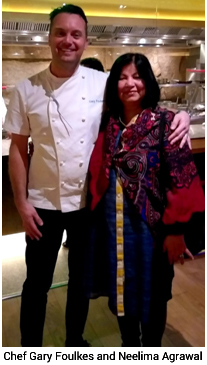
The food does depend upon the ingredients, and I get the best available. What I always do is say that ‘you send me a list of the best ingredients you can get, and I will plan my menu around that.’ And they said, ‘There is very nice king fish.’ So I am doing a kingfish dish tomorrow, which is the same dish I do in the restaurant. I don’t think it makes sense for me to send a list of ingredients, it is not going to be what I want. No point for me to say, ‘get me 20 Cornish mackerel’. I can get a better quality of tomato for instance in England, from France or Italy, just an hour away. On the other hand, the lamb I have for tomorrow is outstanding, and so is the lobster, and kingfish is delicious. I adapt. It is always a little difficult obviously when cooking in another kitchen and as well as another country. It takes ten times longer, but it is also more exciting and fun.
Is seafood your specialty?
This is what we cook at Angler. One thing that British isle has is excellent seafood. The water temperature is right for the fish. Most of the fish I get comes from Cornell down in the South. My shellfish comes from Scotland, which is high in the north. This is one of the great things. We don’t have to worry about great fish. Great fish is already there. Obviously, it is very seasonal, so I plan my menu around what is in season, and when what is best, because we have such a great variety of fish. At certain times of the year, we do not use the Roe fish, which gets really big in size when it is spawning. The flesh of the fish at this time becomes really fatty, as opposed to being firm and taut. Then I get something else. We don’t eat oysters in the months without R.
You worked with Gary Rhodes at an early age. How has he influenced you?
I worked with Gary when I was 18. The main things I learnt working for Gary was that if you find an amazing ingredient, a beautiful piece of fish or lobster for instance, you don’t need to do a lot to it, you need to respect it and cook it right because the ingredient it thinks for itself. A beautiful piece of lamb or piece of mango, you do not need to do much to it, you need to finish it. Nature does the hard work; all you need to do is finish it off.
I have worked with some excellent cooks. Philip Howards at The Square, the popular chef Bubble Vestini, and John Campbell at The Vineyard, Richard Neat and William Drabble. All understand food, all great cooks, and it is good for me to work for those people, because I could just soak it all in like a sponge. I learnt so much in those kitchens, different things from each person. The main place was The Square, that was the place where I lived the most. You take in what you want, what you don’t want you leave behind. Then you become a hybrid of all these people, you have worked for.
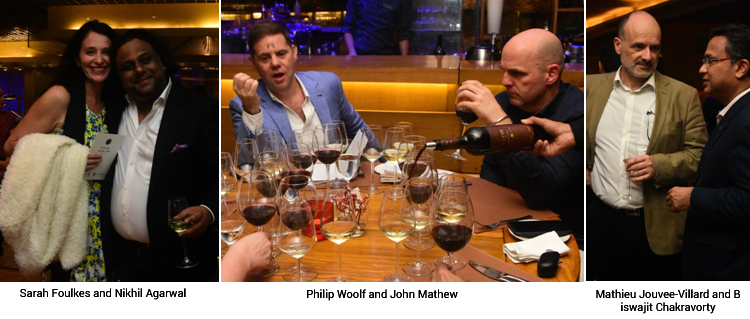
You have had the Michelin for four years now. Is maintaining the Michelin Star status very difficult?
Yes, we progress every day in the restaurant. Some days we progress a lot, some days you progress a little bit, some days you regress and catch up the next day. It is hard because it has to be consistent. That is the main thing. It is important to be consistent about the product, how it is cooked, how it is served. One day, two chefs might call in sick, but the person who is being served is not going to care. He wants the food to be the same as it was served last week. We have to deal with all this.
Do you have to cater to culinary preferences beyond what is on the menu?
Yes, in London in particular, we get a lot of allergies, and dietary preferences. We try to address that. While we specialize in fish and shell fish, we do get vegans or vegetarians, perhaps for a table of eight. We have a set menu, obviously not as expansive as the rest of the menu.My idea is whoever comes to the restaurant, whether a vegan or whether they have other requirements, I want that they should have a great time, that’s what I really care about. No matter what is served, it should be delicious.
On 15 February 2020, we partook in the grand five-course dinner.
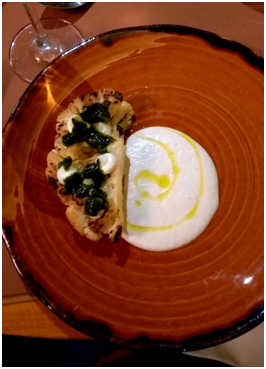
Pre-dinner wine –Grover Soirée Brut 2017, Nashik India
First – Chilled Avocado gazpacho, horseradish, fig leaf, green tea (V)
Pairing –Valdivieso Sauvignon Blanc 2018, Central Valley, Chile
Second – Cured kingfish, green apple, wasabi, cucumber
or
Burrata, strawberry, basil, sweet tomato (V)
Pairing – Bush Ballad Chardonaay 2019, South East Australia, Australia
Third – Lobster, cauliflower, palm heart, lemongrass
or
Roasted cauliflower, cashew nut milk, goat’s curd, curry leaf (V)
Pairing – Grover La Réserve Blanc 2017, Nashik, India
Fourth – Rack of lamb, black garlic, crisp lamb shoulder, morels
or
Creamed polenta, morels, black garlic, honey and thyme glazed celeriac (V)
Pairing – Grover Chéne Grande Réserve 2017, Nashik, India
Fifth – Indian Mango, coconut, kaffir lime, yoghurt (V)
Pairing – Geisha Blossom by TWG Tea
